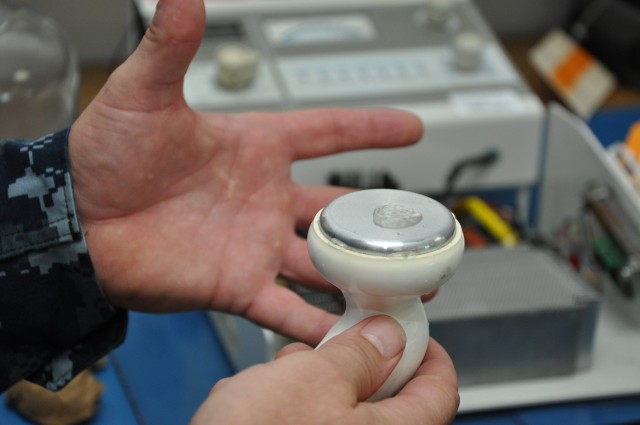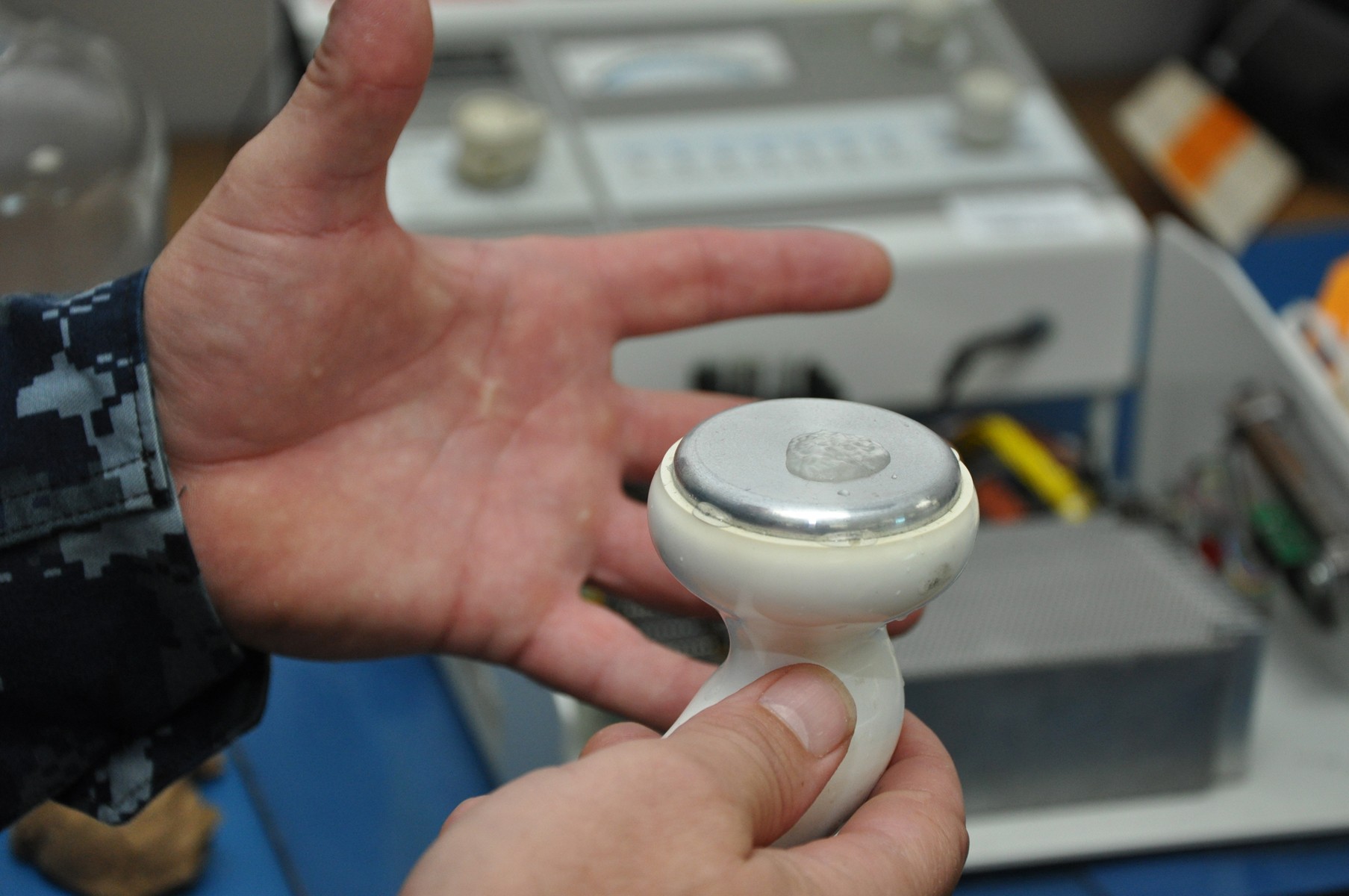FORT SAM HOUSTON, Texas -- When a heart-lung bypass unit loses pressure during surgery - who does the surgeon call'
The BMETs, of course.
BMETs are the Biomedical Engineering Technologists who ensure medical devices and equipment used for diagnostic, monitoring, or therapeutic purposes meet criteria and reliability through testing, maintenance and repair.
If these devices are not working properly, misdiagnoses may result in injury, fail to give an alarm during a heart or other organ abnormality, or a defibrillator may not deliver an adequate impulse to save a patient's life.
"The need for BMET training to be cutting edge is paramount," said Navy Chief Hospital Corpsman Art Navarrette, the Navy service lead for BMET.
"The continuous evolution of health care technology demands BMETs to constantly evolve troubleshooting techniques as well as technological skills," he said.
"The medical community is transforming health care through information technology, so should the BMET."
A civilian BMET generally completes a two-year program leading to an Associate of Science degree from an accredited institution, then certifies through testing.
The military biomedical technician program is 41 weeks long for Soldiers and Airmen. Sailors have an additional 20 weeks of training. The BMET program is one of the longest schools in the Department of Defense for enlisted health care service members according to Navarrette.
BMET curriculum recently kicked off its first series of classes at the Medical Education & Training Campus, relocating a tri-service training curriculum from Sheppard Air Force Base in Wichita Falls, Texas.
Currently there are 136 students in the program - split between Fort Sam Houston and Sheppard.
"It's like a giant PCS move for the schoolhouse, but the schoolhouse doesn't move," Navarrette said, adding that historically, the Army and Navy trained and mentored BMETs together since the 1930s, so a joint environment is already part of training.
With such a long time together, classes develop a cohesive approach toward success - scheduling study groups together to push and challenge each other, aiding completion of the program.
The Air Force has approximately 15 instructors, the Navy has approximately 22 instructors and the Army has approximately 38 instructors.
"As a team we will have 22 iterations with 18 students per class which gives us a throughput of 396 personnel. The students begin their training learning about electricity and electronic principles moving on to the basics in troubleshooting," Navarrette said.
Students troubleshoot in the lab where they have hands-on experience with infusion pumps, defibrillators, sterilizers, dental equipment, centrifuges, X-ray machines and several other medical and dental devices.
"Everything here is like stairs. They get the theory, they get the hands-on preventative maintenance and by the time they're done, they'll have built a computer, worked on an X-ray unit and then do the service-specific," explained Navy Hospital Corpsman 1st Class John Anderson, an instructor with the BMET program.
"We teach them how to troubleshoot and know what they're doing, and how to read a manual because you'll be in the middle of nowhere - underway on a ship, or out in the desert."
The first machine students troubleshoot is the GOMCO® a basic suction machine found in every operating room explained Anderson.
"You know when you watch "ER" and they say 'More suction!' because the all that little stuff - blood, fluid - stuff is in the way and the doctors can't see and can't sew or whatever. These are the rudimentary suction units they use," he said.
Students troubleshoot removing water, not blood, from a simulated patient using the GOMCO®. Anderson breaks a circuit or removes a wire that causes a problem students must find then fix.
"They get to figure out if a fuse is broke. This is the very first time they may actually get to see a transistor work - this is their scratch and sniff," Anderson joked.
BMET students are learning teamwork from an inter-service perspective as well.
"There's definitely more benefits than challenges. Benefits are that Sailors, Soldiers, Airmen who come through here are right from the get-go exposed to all three services and that's the way the military is going," said Navy Chief Hospital Corpsman Russell Gardner, an instructor with BMET.
"Across the pond, in the desert, it's tri-service - quad-service sometimes. They know the rank structure, some of the traditions and history of each of the other services. They see the three services from the instructor's standpoint and with their peers, so they see both sides," Gardner said, adding that the program is an excellent return on investment for students and the services.




Social Sharing